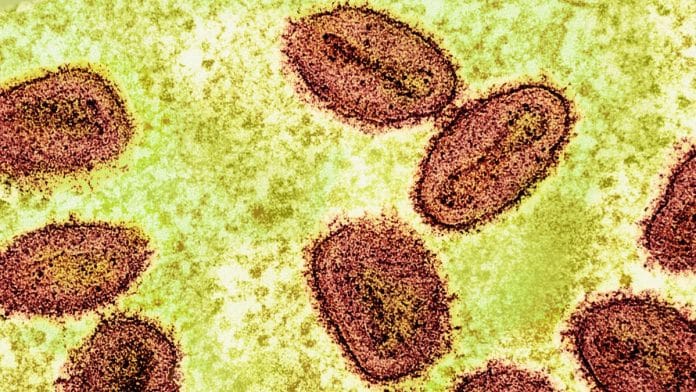New Delhi: Scientists from the Jawaharlal Nehru Centre for Advanced Scientific Research (JNCASR)—an institute under the Union Ministry of Science and Technology’s Department of Biotechnology (DBT)—have come up with a novel way to detect mpox strains that is specific, avoids false positives and can possibly open pathways for therapeutic potential.
A DBT statement explains how mpox is a double-stranded DNA virus like SARS-CoV-2 (severe acute respiratory syndrome virus-2) or HIV (human immunodeficiency virus) and the most common method used to detect it is PCR (polymerase chain reaction).
The technique replicates the virus multiple times to study it better. However, a drawback is that it often yields false positives due to non-specific signals received from the replicated DNA.
The JNCASR scientists detected a structure within mpox DNA known as G-quadruplex or GQ, a very stable and specific component of the virus.
They found that instead of amplifying the entire DNA sequence, one can simply look for and identify a GQ structure to detect mpox. It is highly specific, reduces the chances of false positives and once studied further, can also be a target for antiviral therapy against mpox. Read more here.
Oldest known alphabetic script found in Syrian clay cylinders
In what could be a new development in the study of written languages in the world, archaeologists from John Hopkins University have found interesting details about clay cylinders with writings in Syria dating back to 2400 BCE. These are supposedly evidence of a form of the oldest ever alphabetic writing in the world.
Found in western Syria’s Umm el-Marra region in 2004 alongside some skeletons, gold and silver jewellery and cookware, these small cylinders are at least 500 years older than when scientists originally thought alphabetic writing began in ancient Egypt—between 1800 and 1900 BC.
The findings were presented at the American Society of Overseas Research meeting Thursday.
While the archaeologists have yet to decipher the script, it does indicate positive connotations on the development of language and an alphabet-based writing system, which is different from hieroglyphs and cuneiforms where the shapes do not necessarily represent a particular sound.
Can human hearts repair themselves? Study says yes
Scientists from the Karolinska Institutet in Sweden have found that the human heart has a regenerative potential, which can increase substantially with a surgically installed heart pump. The study, published in the journal Circulation Thursday, looks at the endogenous cardiomyocyte regeneration in a human heart, which means that every heart can regenerate its muscle cells throughout the lifetime of an individual but at a very slow rate.
The Swedish scientists found that this regeneration rate becomes even slower in case of a heart attack or an injury.
However, when patients have a surgically implanted heart pump known as a left ventricular assist device (LVAD), the regeneration capacity of the muscle cells increases by six times. This study is a good starting point to look at the possibility of naturally boosting the heart’s own repair mechanism, by understanding how LVAD assists in increasing regenerative potential of hearts. Read more here.
Utah scientists sent blood cells to space to study effects on clots
Scientists from the University of Utah have sent blood cells to the International Space Station (ISS). The blood cells will be studied by a team of NASA astronauts and a ground crew of Utah scientists to analyse how being in space leads to the prevalence of blood clots in humans.
It is a known fact that as astronauts spend longer time periods in space, their chances of developing blood clots are higher. This may be linked with microgravity and cosmic radiation, scientists presume. Since treating blood clots is difficult on the ISS, scientists want to gain more knowledge about why they occur and how, and if they can be prevented.
On the ISS, scientists intend to study platelets—blood cells directly involved in clotting—and analyse their gene activity and proteins to see if being exposed to space has any effect. Simultaneously, a group of on-ground scientists will be mirroring the ISS scientists’ actions. This is to ensure that any change in the space-bound blood cells is immediately noticed. Read more here.
(Edited by Radifah Kabir)
Also Read: 2024 Physics Nobel for AI scientists. How they pioneered machine learning modelled on human brain






